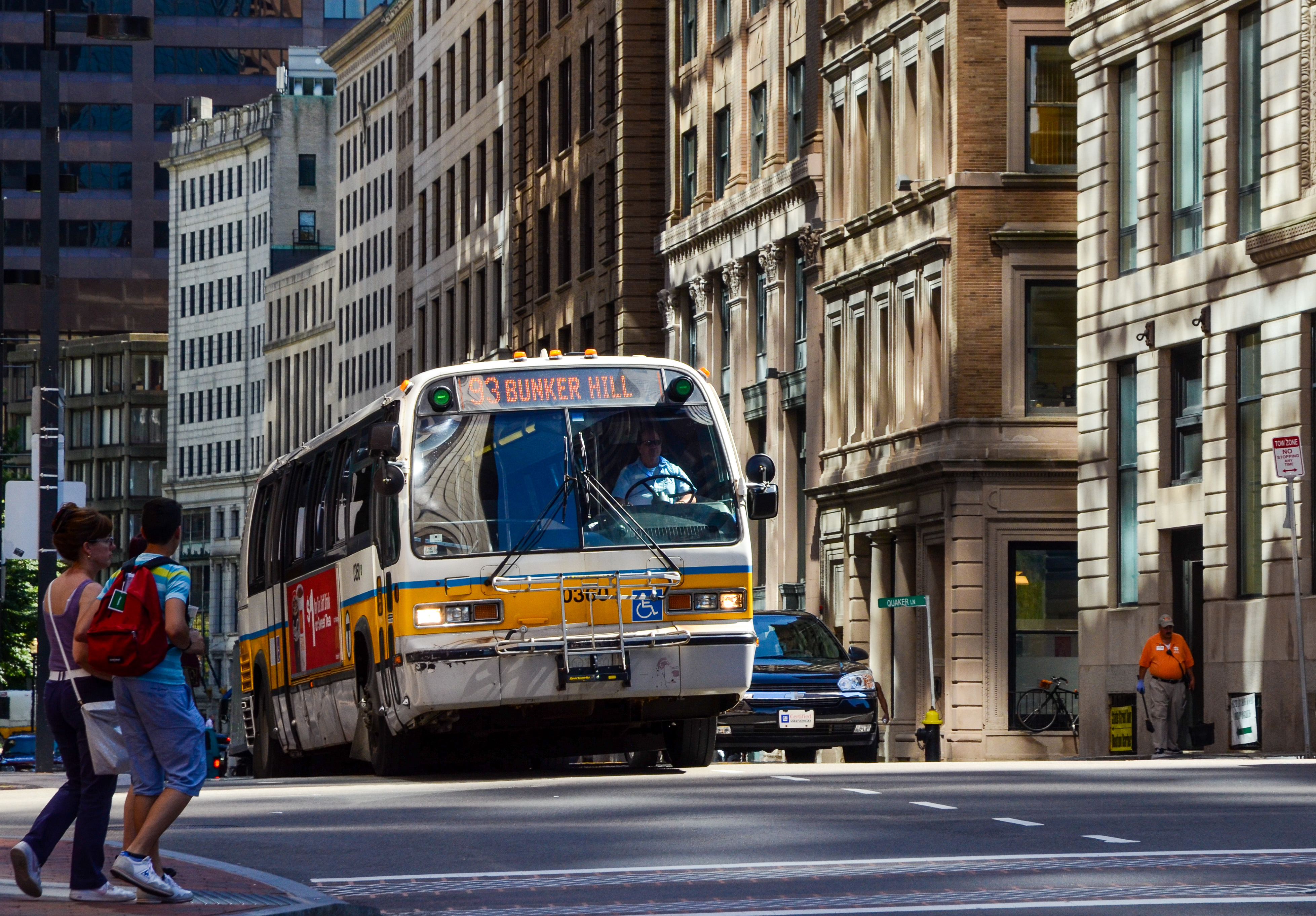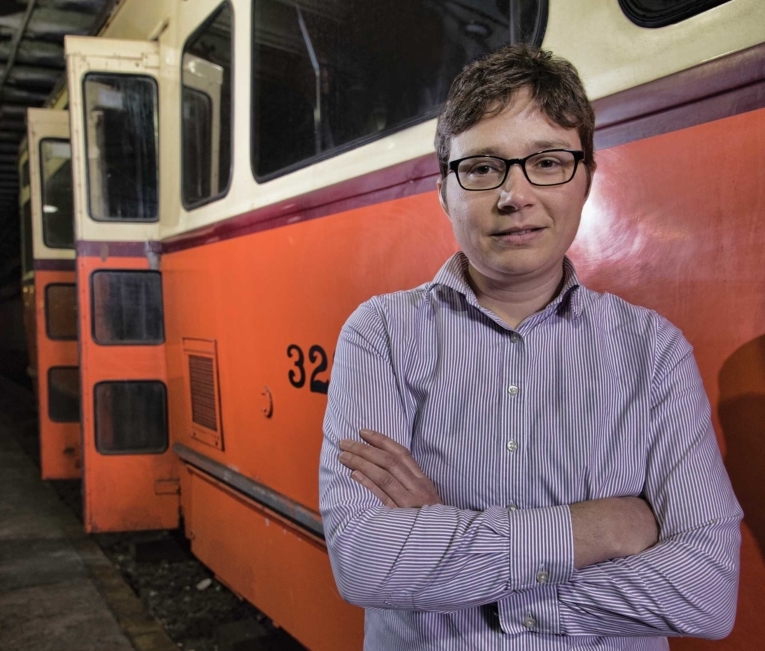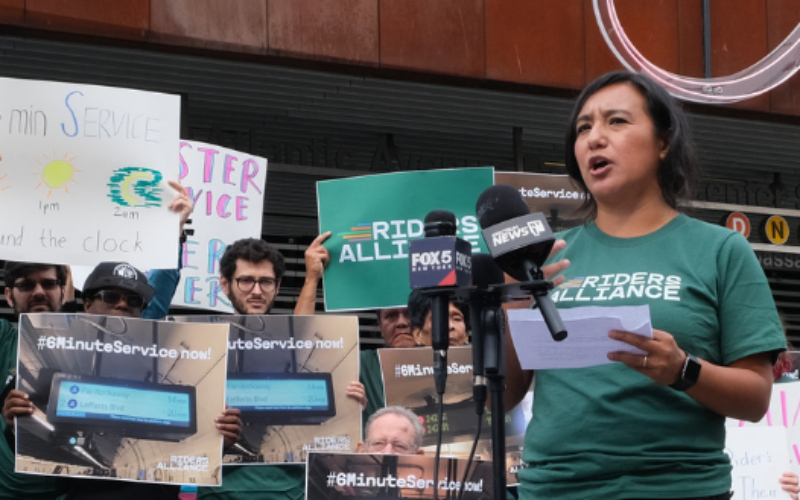
Boston, Massachusetts

This Ridership Initiative post, an interview with MBTA Director of Fare Policy and Analytics Laurel Paget-Seekins, is our latest showcasing the voices of transit agency staff who are working to understand and respond to declining ridership in their system. Laurel used her department’s ridership analysis as an opportunity to raise actionable short- and long-term policy questions for the MBTA board’s consideration, engaging them in strategic, timely conversations about everything from vehicle procurement to the agency’s high-level goals. If your agency would like to share its story or if you would like to hear from a specific agency or about a particular topic, let us know by emailing [email protected]
TransitCenter: Why is MBTA focused on understanding ridership?
Laurel: Ridership is a direct proxy for the region’s and the state’s economic, environmental, and social goals. Transit is a key part of the Boston region’s economy, and Boston is the economic engine of the state. Getting people to drive less and ride transit more supports the state’s environmental goals. And many people depend on transit as an affordable way to get where they want to go.
TransitCenter: What is unique about Boston’s ridership trends?
Laurel: We aren’t an outlier; this is a trend across the country. We have had super useful conversations with peer agencies trying to understand the same issues, comparing notes on analytical methodologies, for example. We share a lot of hypotheses but are still missing some key data. We are seeing that something different is happening today—historically, agencies have seen ridership growth during periods of the kind of strong economic growth we are seeing in Boston. What has changed? You have to start hearing the story nationally to see what impact the introduction of new transportation options, including Uber and Lyft, have been having. It’s valuable to have contacts at other agencies to facilitate those conversations.
TransitCenter: This past fall you gave a three-part presentation series to the board, focused on ridership. What brought that about, and why did you structure it the way that you did?
Laurel: The presentations were a follow-up to the board’s strategic plan—their stated interest in setting a goal to increase ridership. Ridership is a big, complex topic though, and too big to squeeze into a single meeting. We view this as an opportunity to create a conversation with the board over time—presenting them with options, letting them respond to what they are hearing, and providing them the space to ask questions—and it allows us to explore the ways in which ridership is connected to different components of the board’s responsibilities.
In the first presentation, we wanted to show the short-term trends. How have we been doing in the past couple years, what do we think are the main factors impacting ridership now, and how might we address them?
Second, we presented long-term ridership forecasts with a focus on the factors that the MBTA does not necessarily control but needs to be thinking about. This was intended to inform the board’s decision about what an appropriate ridership goal might be, as a matter of policy.
Finally, we explored the ways in which those long-term forecasts impact capacity issues and should inform short- and medium-term decisions about vehicle procurement and our system’s capital investment needs. In other words, what upgrades do we need to make in order to carry the number of riders that we think we are going to have, and that we want to have? If we also care about preserving or even growing off-peak ridership, that also impacts the bus service planning we are doing as part of the Better Bus Project.
TransitCenter: How has the board responded to the presentations?
Laurel: We’ve reached consensus that we want to increase transit’s market share (measured as trips per capita). Ridership is currently down overall, but there still isn’t much of a decline during peak hours. This has highlighted the times and areas where the MBTA is most competitive—our main strength is during peak-hour congestion, in places where we have dedicated right-of-way. So on the one hand, we need to preserve sufficient capacity to meet peak-hour transportation demand loads, but on the other we also need to be thinking about off-peak and weekend service, and how to balance our investment in services where we have been losing a competitive edge.
This also goes back to economic, environmental, and social goals—if you care mostly about the economy, peak-hour transit might matter most, but environmental and social goals depend on strong off-peak service as well. This discussion will impact operational decisions, fare policy decisions, and capital decisions for years to come.
There has been a greater focus on the capital needs for the system as a result, because ridership has such a strong connection to long-term capacity issues. Where are we already planning to increase capacity, and where might that not be enough?
This also helps us start to think about fare policy in relation to our new fare payment system. We are just at the beginning of that policy conversation, but we will need to think about time-of-day pricing and monthly pass options, for example. We increased the multiple (break even point) for our monthly passes in July 2016, and we saw a decline in monthly link-pass sales. We have hypothesized that this has contributed to a decline in weekend/off-peak trips, since fewer people have unlimited rides. One step the MBTA has taken is to pilot a $10 unlimited weekend pass on our commuter rail system this summer. This will test if we can increase ridership and revenue by lowering off-peak fares where we have capacity.
TransitCenter: How does talking about ridership also inform MBTA’s conversations with local and regional partners?
Laurel: Once you acknowledge that MBTA’s strength is during congested times where we have dedicated right-of-way, one obvious takeaway is that we need more bus lanes — dedicated right-of-way isn’t just for trains. This resonated with our board, and has led to a healthy conversation with cities that are part of our service area. We are working with multiple cities and towns to pilot on bus lanes and to test transit signal priority on key corridors.
TransitCenter: What happens next?
Laurel: We continue to analyze our ridership trends in more detail. We are working on a spatial analysis of bus ridership trends that considers system performance and demographics.
All of our ridership analysis informs both long and short term decision-making. For the long-term the agency is developing fleet and facilities plans. Our Focus 40 long-term plan is also being finalized, which informs our capital planning.
In the short-term, this analysis will impact decisions about fare policy changes enabled by our new fare collection system, our service planning, and help us have more conversations about dedicated right-of-way.
Want to learn more from Laurel and her colleagues? Check out the MBTA’s excellent Data Blog and explore their beautiful Performance Dashboard.
 On the Brink: Will WMATA’s Progress Be Erased by 2024?
On the Brink: Will WMATA’s Progress Be Erased by 2024?
The experience of being a WMATA rider has substantially improved over the last 18 months, thanks to changes the agency has made like adding off-peak service and simplifying fares. Things are about to get even better with the launch of all-door boarding later this fall, overnight bus service on some lines starting in December, and an ambitious plan to redesign the Metrobus network. But all of this could go away by July 1, 2024.
Read More Built to Win: Riders Alliance Campaign Secures Funding for More Frequent Subway Service
Built to Win: Riders Alliance Campaign Secures Funding for More Frequent Subway Service
Thanks to Riders' Alliance successful #6MinuteService campaign, New York City subway riders will enjoy more frequent service on nights and weekends, starting this summer. In this post, we chronicle the group's winning strategies and tactics.
Read More